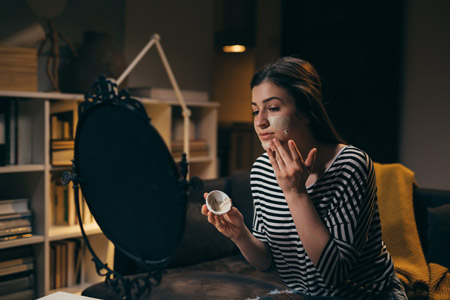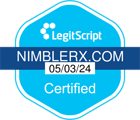


Exploring Fitness Trends for a Healthier You
There’s more than just one way to live a healthy life — but a key part of any successful health-conscious routine is to get your body moving. Along with diet and other choices, exercise is one of the best ways to keep you healthy, mobile, and happy.
When you think of exercise, treadmills, running, and other traditional activities may come to mind, but there are more ways to get active than ever before. This presents an incredible upside to patients looking to exercise. Now, whatever your fitness level, personal preferences, or unique health journey, you’re likely to find a form of exercise that suits your needs.
Remember to always consult with your doctor before trying any new exercise routines to determine if they’re right for you, especially if you have any past injuries or other chronic conditions.
Let’s explore some of today’s most popular fitness trends and how they can play a part in a healthy lifestyle.
Functional Fitness
One of the most popular exercise routines today is functional fitness training. The National Academy of Sports Medicine defines these exercises as, “a type of training that focuses on movements that help you function better in your everyday life. The purpose of training in each of these movements is to keep muscles functioning as they were designed. Functional training typically uses compound movements, meaning you bend at multiple joints and recruit several muscle groups to achieve the movement.”
Essentially, functional fitness is a type of training that’s designed to strengthen the muscles you use day to day, in the way they were intended to be used. This can be incredibly beneficial for those recovering from injuries or older patients looking to gain mobility and keep their independent lifestyle.
These exercises don’t require a ton of equipment, or complex movement patterns, and can be done at beginner, intermediate, and advanced levels. With a few small weights or even just your own body weight, you can do functional exercises like push-ups, squats, and lunges.
High-Intensity Interval Training (HIIT)
Don’t have a ton of extra time in your day to exercise? Then HIIT might be just what you need!
The Harvard School of Public Health defines High-Intensity Interval Training, or HIIT, as “a type of interval training exercise. It incorporates several rounds that alternate between several minutes of high-intensity movements to significantly increase the heart rate to at least 80% of one’s maximum heart rate, followed by short periods of lower intensity movements.”
HIIT is really a whole category of workout classes and training routines — many different exercises such as running, dancing, rowing, bicycling, and climbing can be incorporated into a HIIT format. The key is that you alternate intensities on a fixed basis to maximize your heart rate.
Just like many functional exercises, HIIT doesn’t necessarily require equipment and can be done at home or on the go — but most gyms and fitness centers will offer some form of HIIT classes or training sessions.
Dance Cardio
One of the most common complaints about traditional workouts like weight lifting or using a treadmill is that it can be repetitive for folks. If you crave more fun and variety in your workouts, then dance cardio may be an excellent option for you.
Dance cardio workouts are exercise regimes that incorporate traditional dance moves from ballet, hip-hop, and ballroom to build cardiovascular endurance, muscular strength, and mobility. You may know of popular classes like Zumba, but dance cardio can take many different forms.
For folks looking for less intense exercise, traditional ballroom, and social dancing can be a good choice, but there are also dance cardio exercise routines designed to push up your heart rate and challenge your endurance. Some of these regimes can even incorporate elements of HIIT to give participants an extra cardio boost.
Pilates and Barre Workouts
While getting cardio into your fitness routine is essential, it’s not the only part of a holistic exercise routine. Building muscle and maintaining flexibility are also incredibly important.
To do just that, many patients have turned to Pilates. The Cleveland Clinic explains that Pilates is a form of exercise and body conditioning, or strength training, developed by Joseph Pilates in the early 20th century, mostly as a method of injury recovery for dancers, and is focused on improving muscle tone for greater stability and endurance.
There are countless Pilates exercises, and they can be executed by simply using your body weight and a mat or on a Pilates machine known as a reformer or bed.
Pilates is known for creating long, lean muscle and fostering great physical endurance, stability, and helping with injury prevention. This has led to many offshoots and variations of Pilates to be developed, including Barre workouts.
These workouts combine elements of classical ballet, Pilates, and yoga to create a low-impact, but intense workout that targets certain muscle groups and improves flexibility.
Both pilates and barre workouts can be done solo and at home, but doing these exercises within a group fitness setting is also extremely beneficial as instructors can help ensure you’re getting proper alignment and executing movements correctly.
While many of these fitness classes we explored today may be considered “fads”, staying healthy and getting the exercise your body needs to function properly will never go out of style.
Be sure to connect with your doctor on which exercises or fitness routines are best for you and your unique health journey.


.jpg)
.jpg)
.jpg)


















.jpg)





















.jpg)

















.jpg)


























.jpg)
.jpg)
.jpg)









